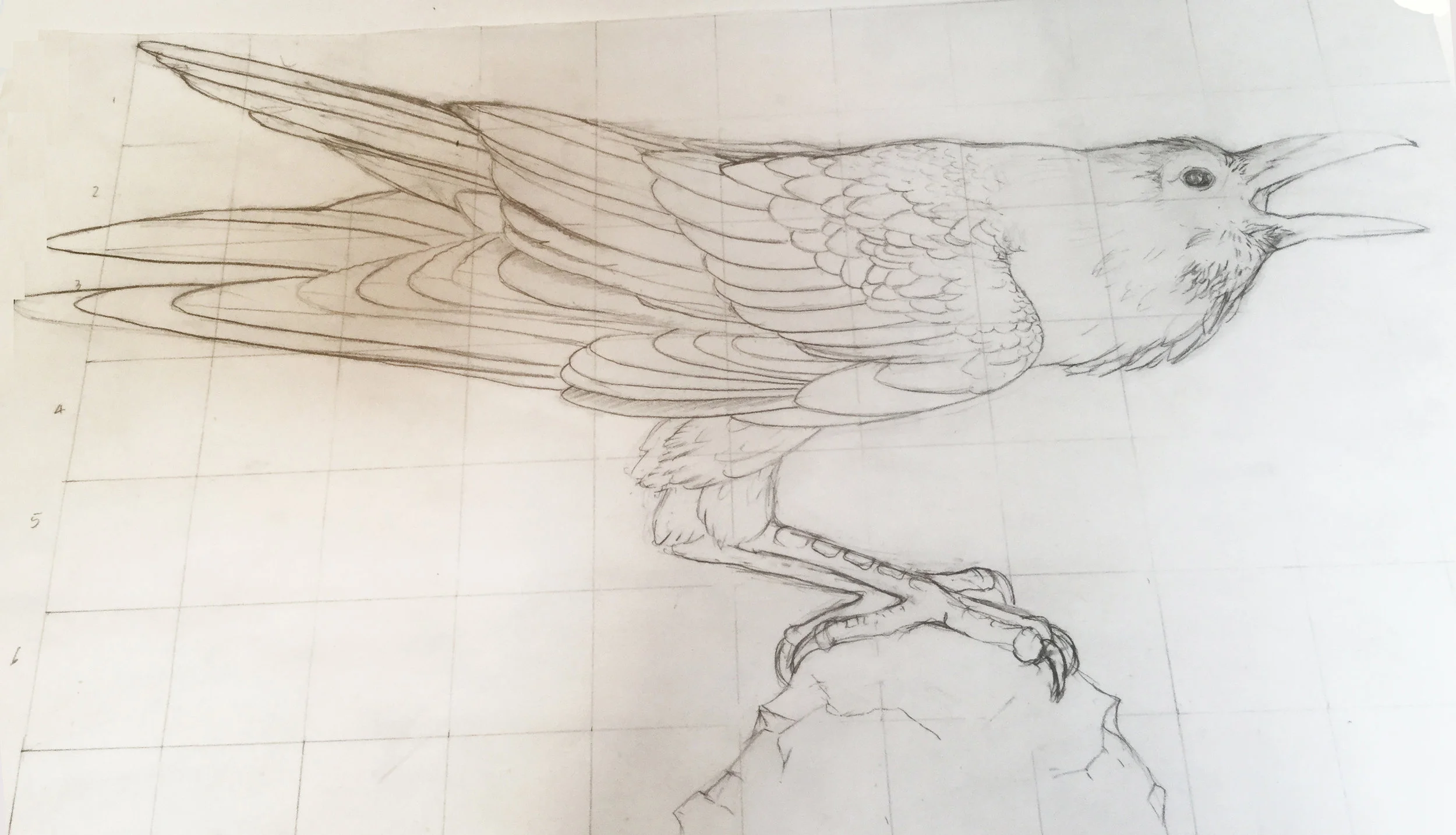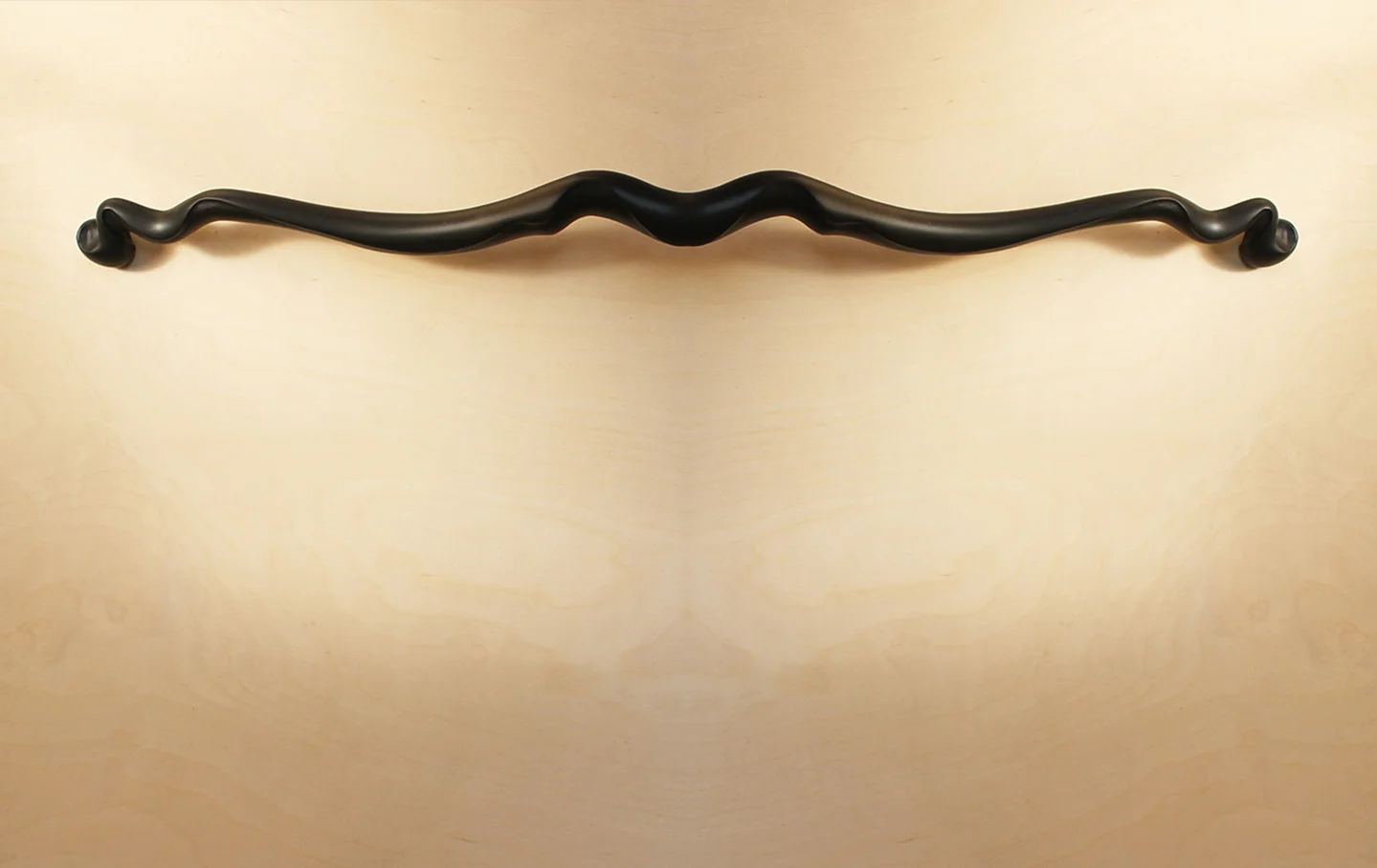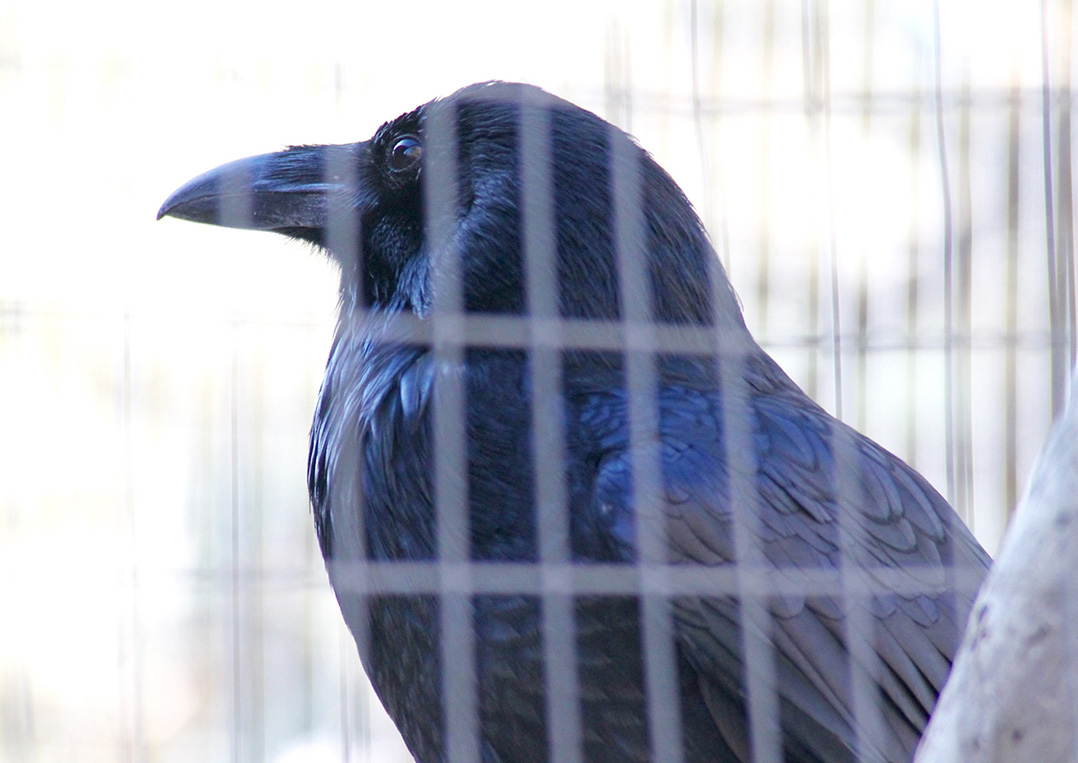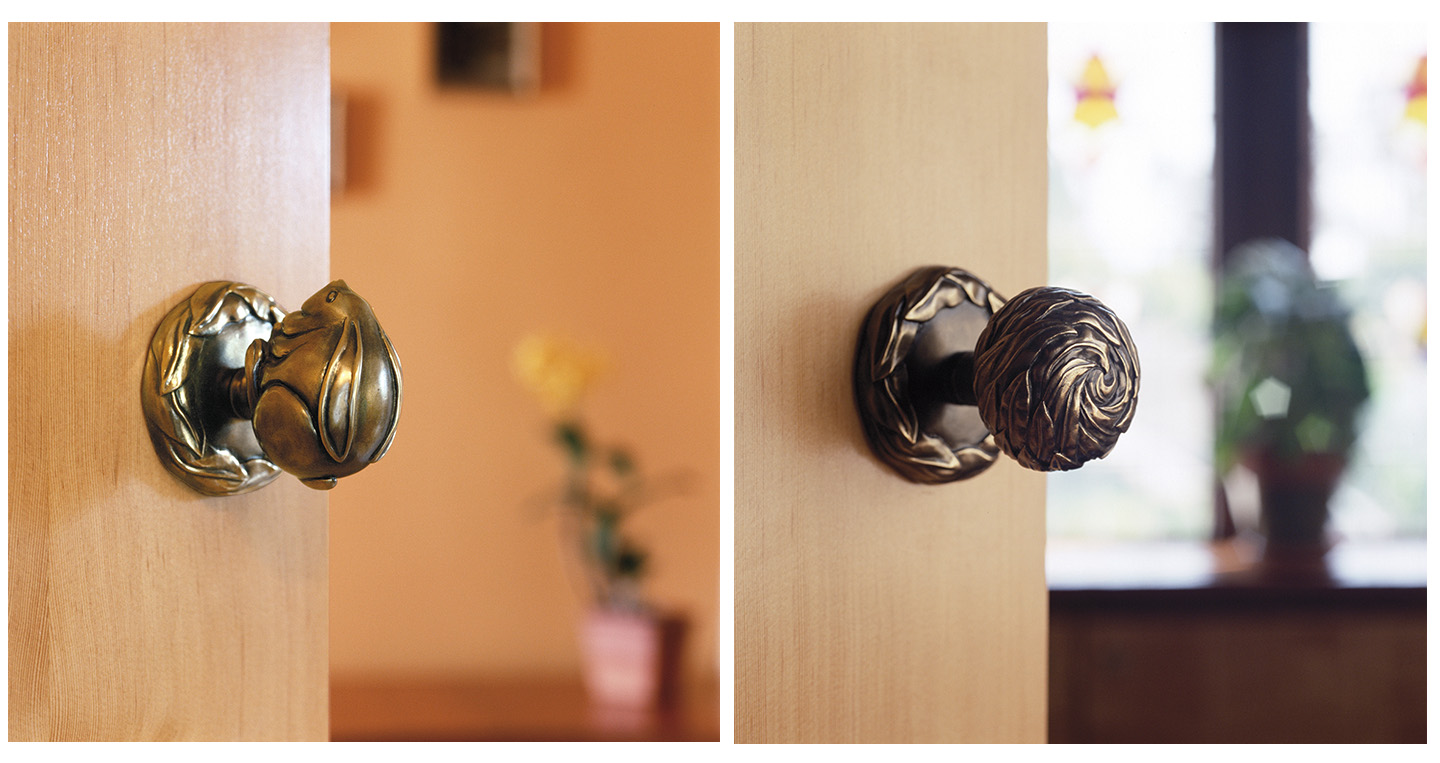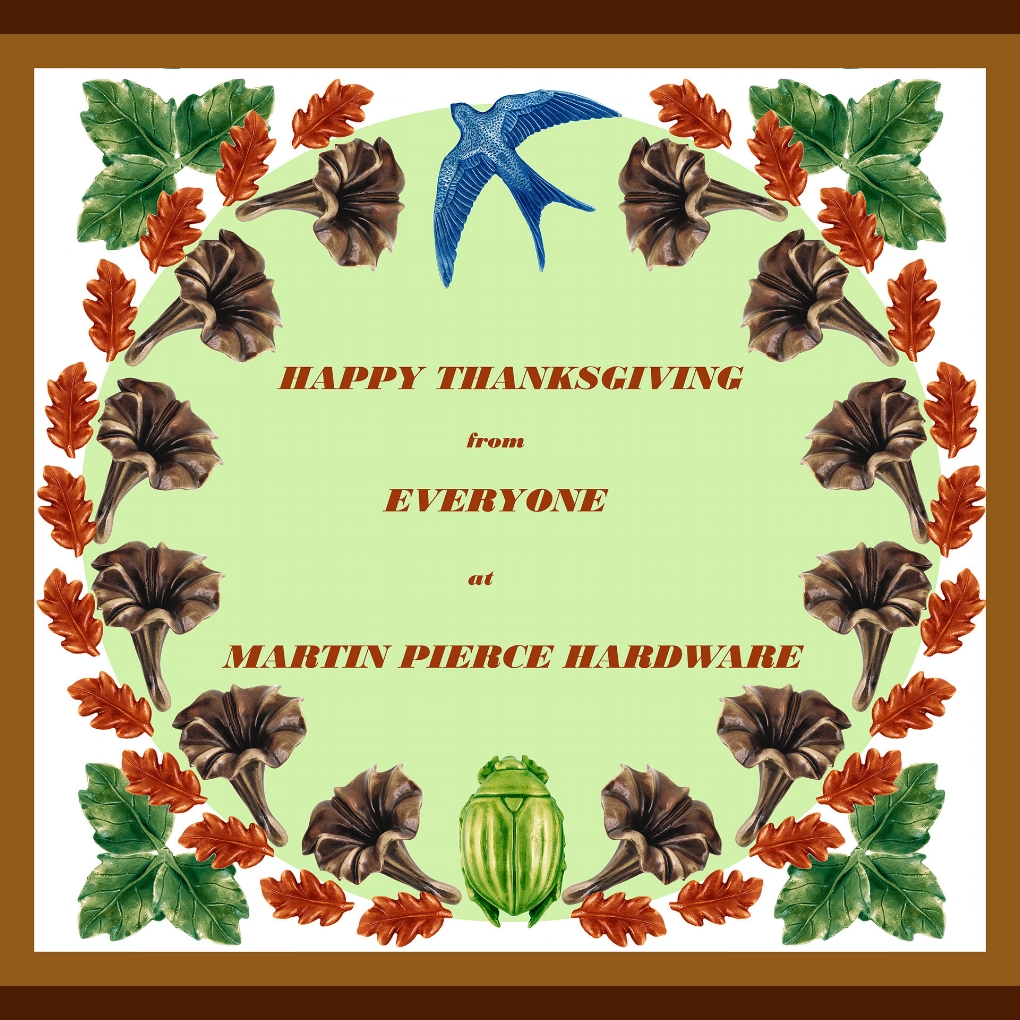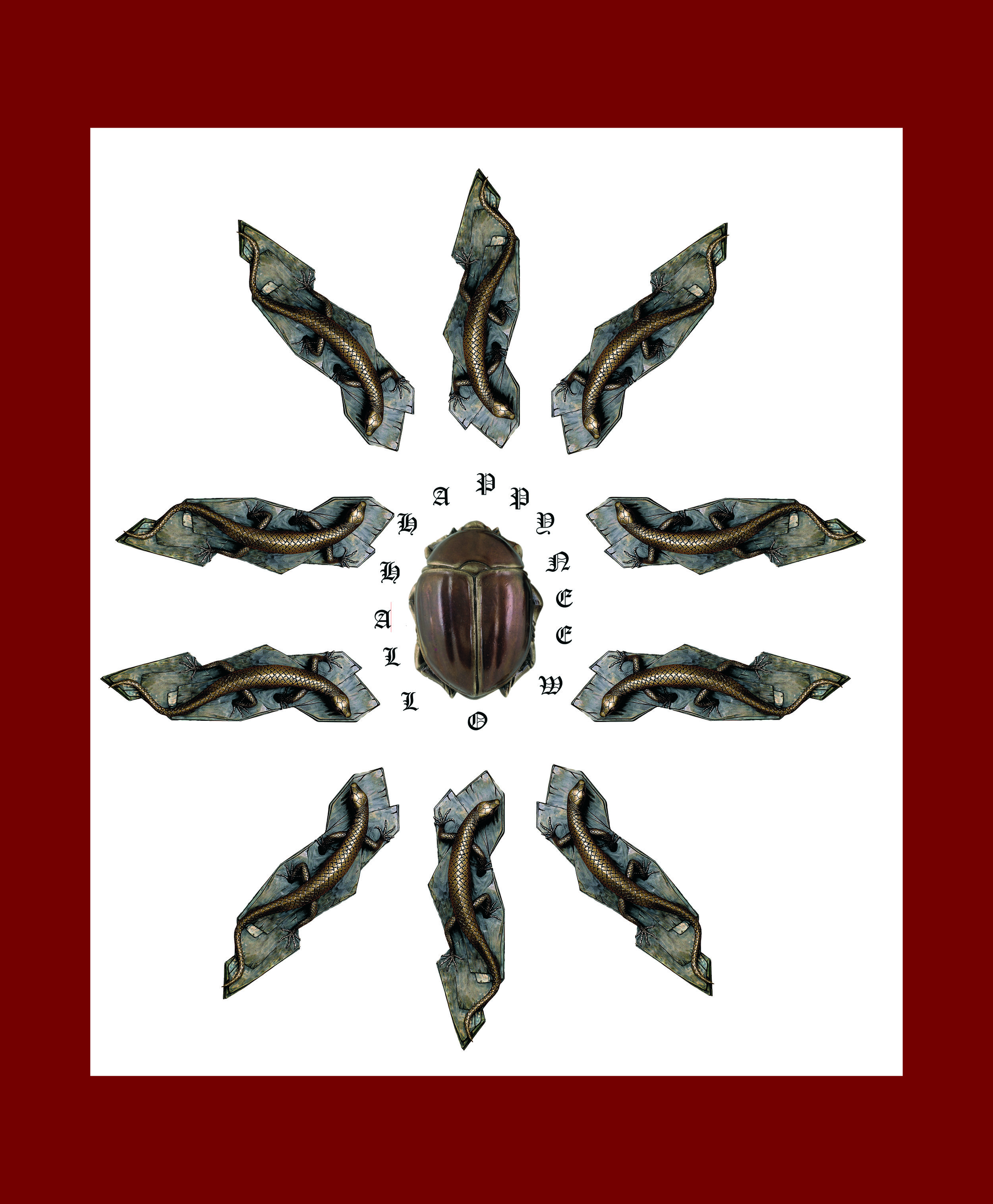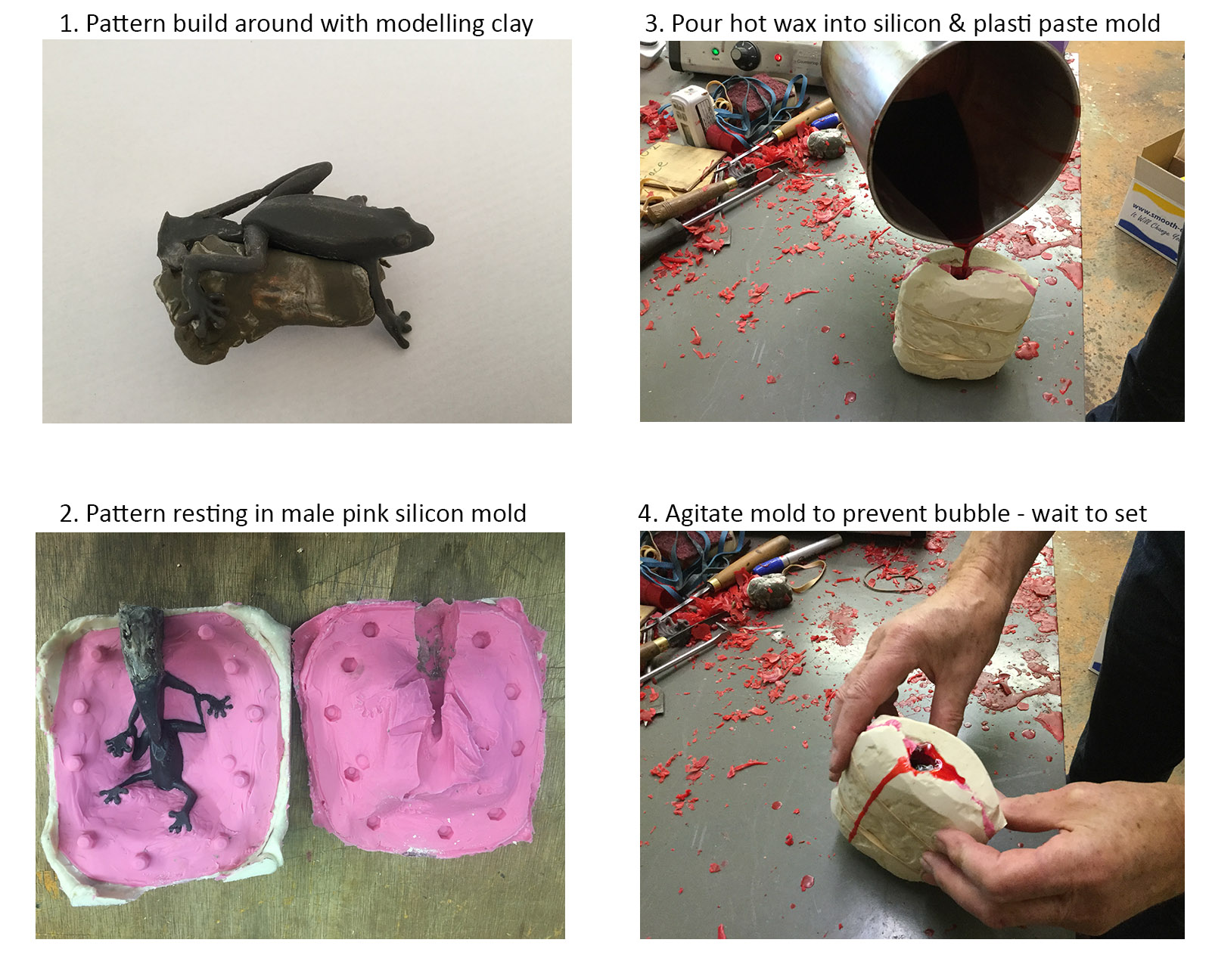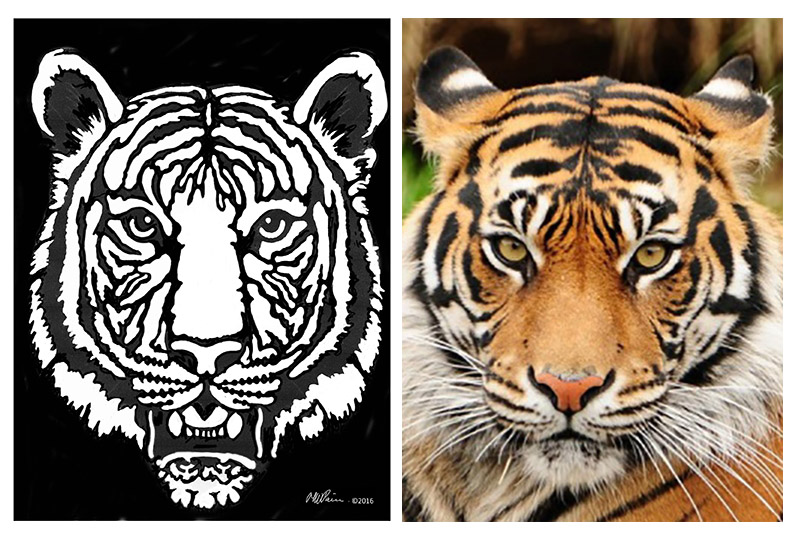One of the advantages to old school artistic methods is that they allow the artist to make more immediate design corrections. While CAD does allow the artist to see his virtual sculpture from a 3D vantage, the same holds true for perspective drawings done free hand with pencil and vellum. No doubt the ease and speed of both methods owes a lot to the different ways our brains are wired and to the different way we learn our artistic skills. While Martin Pierce does use a Wacom tablet with built in mouse, for his initial development drawings he finds he can achieve a faster result by adding and erasing pencil lines.
Plan View of Raven Design
This is the same approach he uses when creating custom door handles and as with sculpture, the grid drawings can be placed on solid wood so that the shape can be traced onto the wood’s surface and then cut out with a band saw. While we could use 3D printing to create the pattern, the speed of printing a quick cast SLA model and the cost makes this approach less attractive. By comparison, once a pattern has been sculpted and the artistic and practical bugs sorted out then 3D printing comes into its own if one wants for example to create a left or right version of a piece. We have occasionally used 3D scanning to scan a pattern and then have created a print file that is a mirror image thus allowing a 3D print to be made. The only drawback to doing this is that you end up with a clone of the original and Martin tends to have a preference for asymmetric designs.
Profile of Raven design


